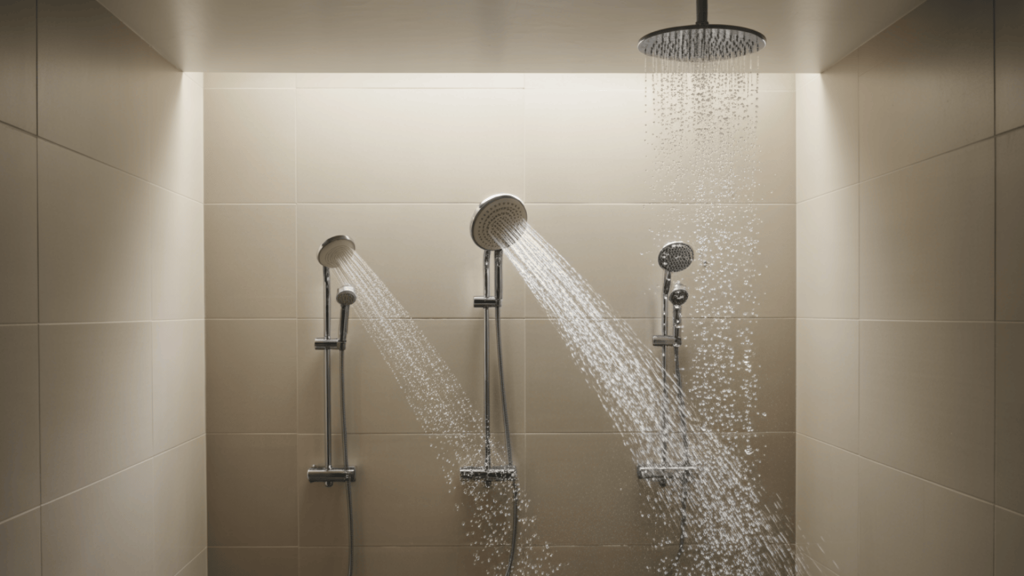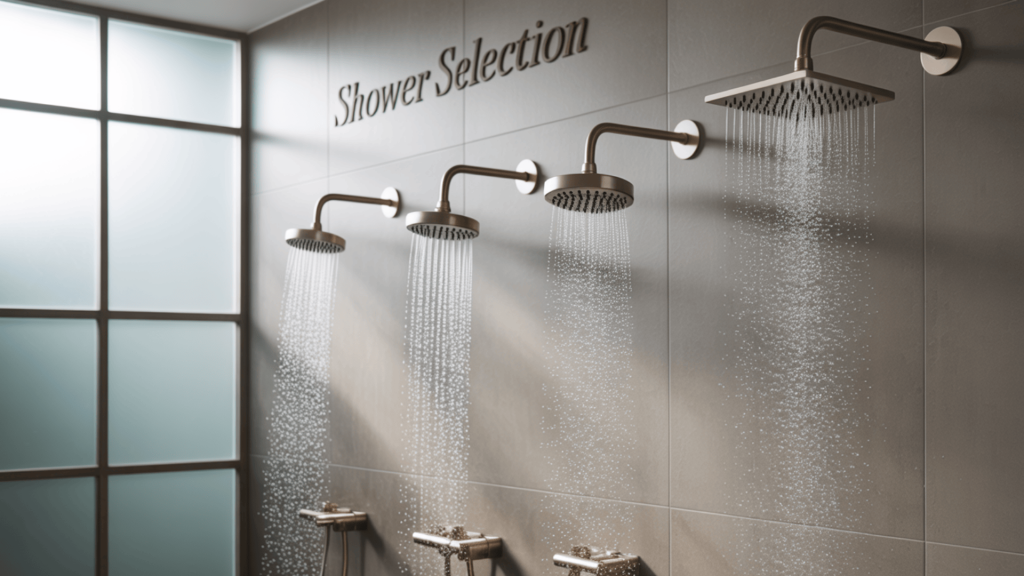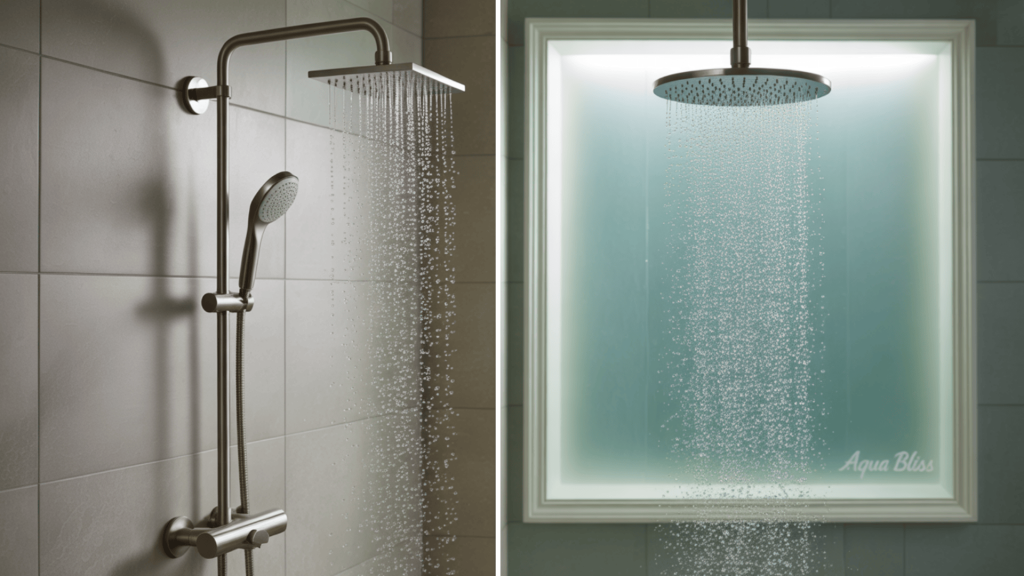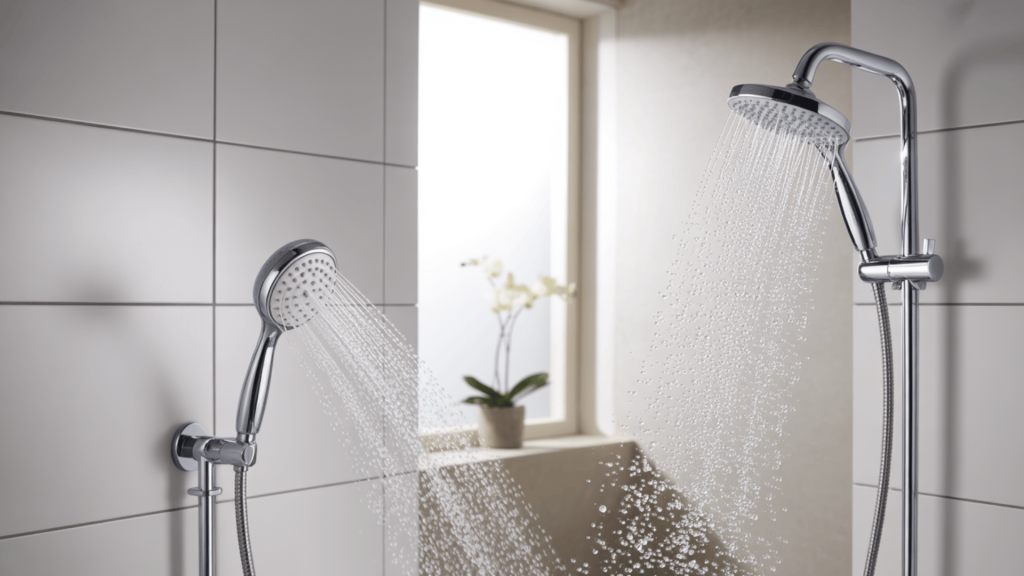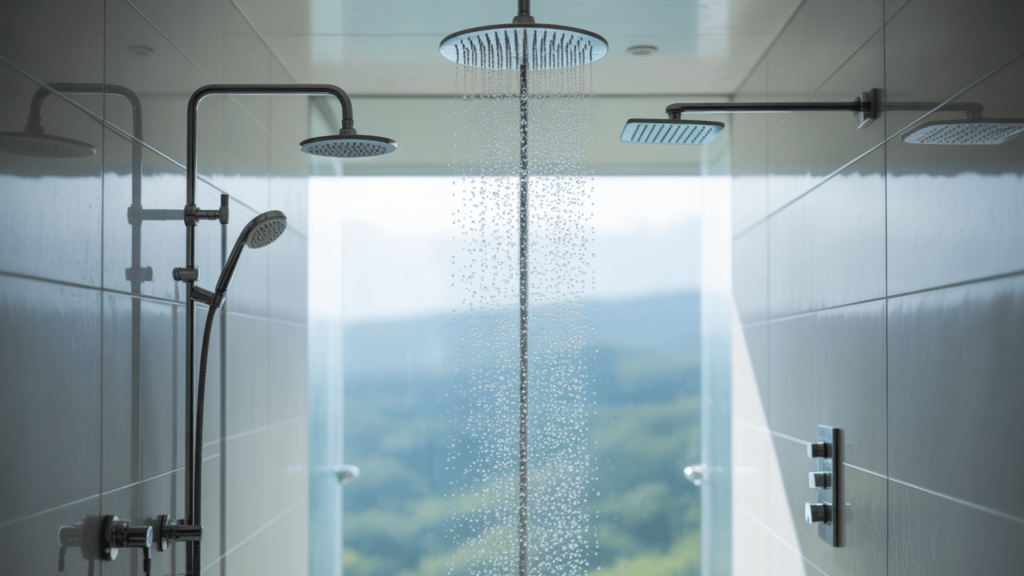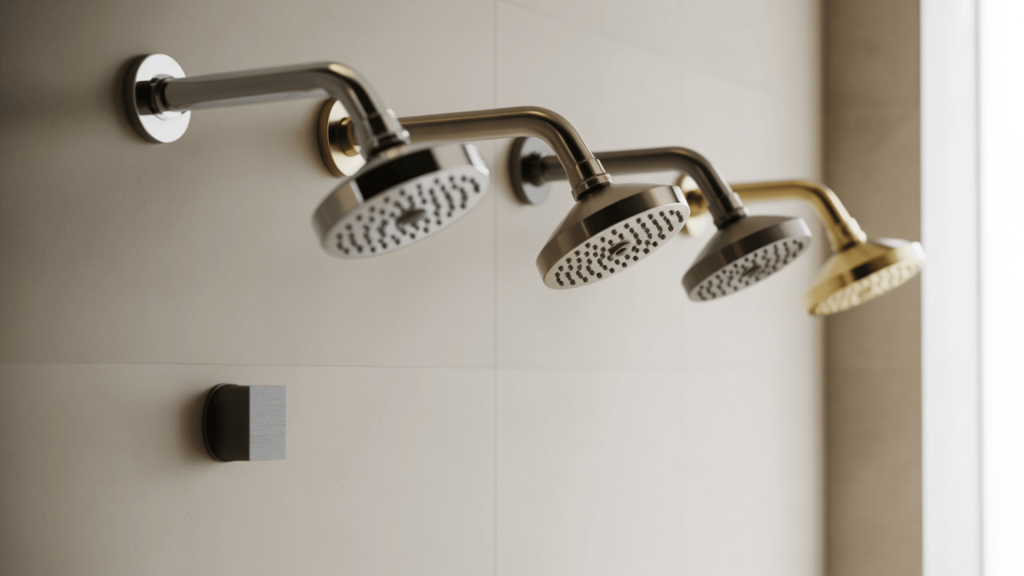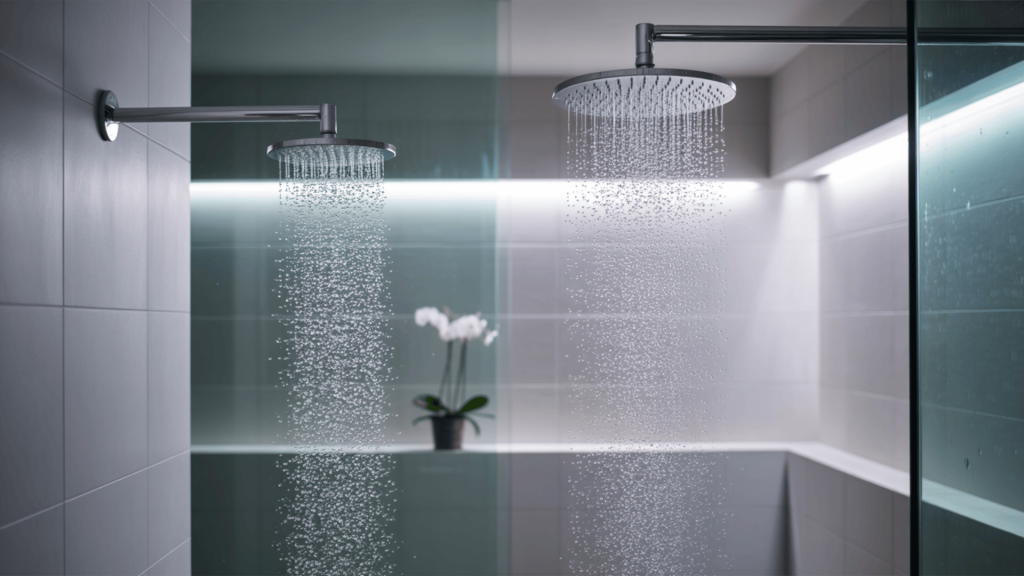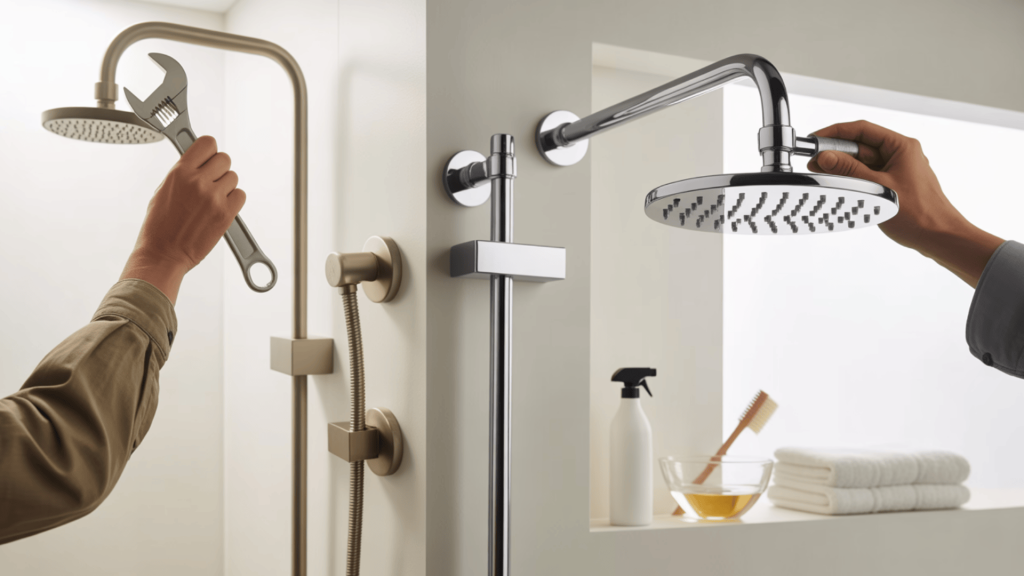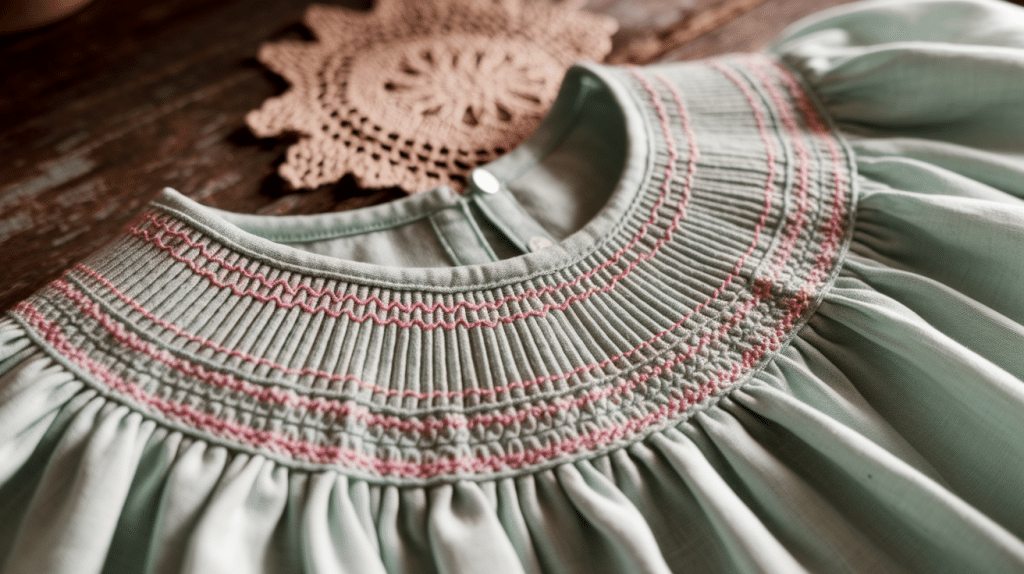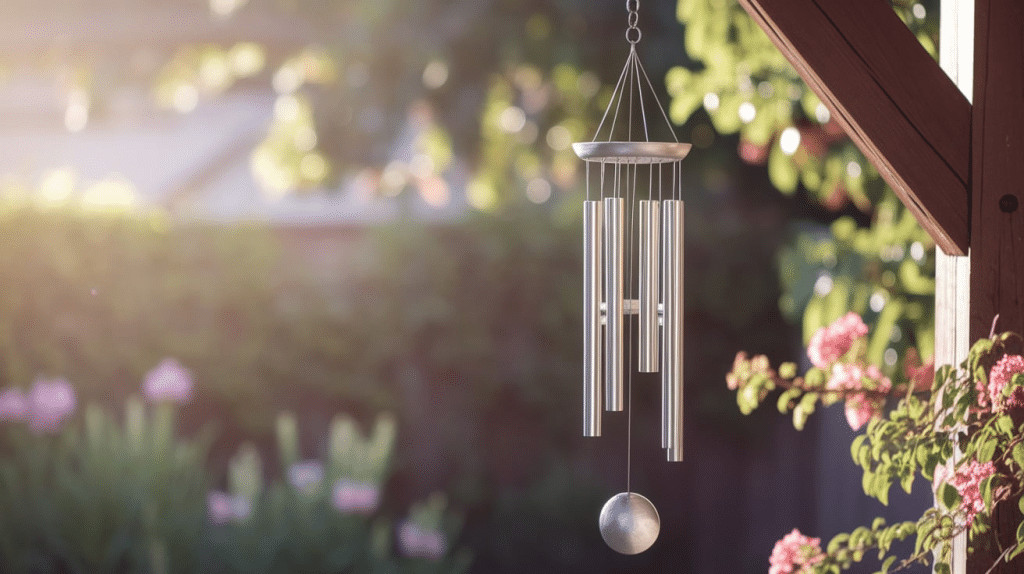Choosing a new shower head can be confusing when faced with dozens of options in various shapes and sizes.
Many homeowners ask, “Are all shower heads the same size?”
The short answer is no—shower heads come in many dimensions, from compact 3-inch models to luxurious 12-inch rainfall systems.
While the connection threads are standardized (typically ½-inch NPT in the US), the actual head sizes vary widely.
Understanding these differences can help you pick the perfect shower head for your bathroom space, water pressure, and ideal shower experience.
Quick Answer—Are All Shower Heads Universal?
No, not all shower heads work the same way.
While most follow common standards, important differences exist that you should know before buying a new one.
Most U.S. homes use a standard connection size – the ½-inch NPT thread that fits onto shower arms.
This means you can usually switch out your shower head without worrying about whether it will connect properly.
This standard has been around for many years, making shopping simpler.
What does change from model to model is the physical size and form.
You’ll find tiny handheld options as small as 3 inches across, all the way up to big 12-inch rainfall models that mount on the ceiling.
These variations help you pick what works best for your shower setup and personal wishes.
Before picking your next shower head, consider what matters most to you: saving water, strong water pressure, or a gentle rain-like shower feeling.
Standard Shower Head Sizes and What They Mean
Different sizes offer unique benefits, making some better suited to certain bathrooms and personal preferences.
Each shower head size provides distinct advantages depending on your needs and shower space.
Small Shower Heads:
Small shower heads (3-4 inches) pack a punch in a compact package.
They often produce stronger water jets because the same amount of water flows through fewer holes.
Medium Shower Heads:
Medium models (5-6 inches) hit the sweet spot between coverage and force.
They work well in most standard showers and are the most common size found in homes.
Large Shower Heads:
Large shower heads (7+ inches) provide exceptional coverage, creating a rain-like experience that envelops your entire body.
These models are ideal for spacious shower enclosures and those who prefer a gentle, immersive shower experience.
When choosing the right shower head size for an enhanced shower experience, consider your water pressure, bathroom dimensions, and personal preferences.
Understanding Shower Head Types and Their Dimensions
Fixed shower heads mount directly to the wall and stay in one position.
They range from small 3-inch models to big 12-inch versions, with most falling in the 4-6 inch range.
Handheld units offer more freedom with their movable wand.
They typically measure 3-5 inches across since they need to stay light enough to hold comfortably.
1. Combo Systems and Special Designs
Dual systems pair a fixed head with a handheld unit, giving you the best of both worlds.
These setups let you enjoy a wide overhead spray while having a handheld option for focused rinsing or cleaning the shower itself.
Rainfall shower heads form a category of their own.
These flat, wide models (often 8-12 inches) create a gentle, soaking shower.
They work best when mounted from the ceiling with enough height above you.
2. Specialty Heads and Their Unique Sizing
High-pressure models often use smaller faces (3-4 inches) to focus water flow for a stronger spray.
This makes them good choices for homes with weak water systems.
Water-saving heads come in all sizes but include special parts inside that mix air with water to maintain good pressure while using less water.
The size of these models matters less than their internal workings.
3. Mounting Methods and Size Limitations
Wall mounts work with most shower head sizes, but have practical limits.
Very large heads (10+ inches) might look out of place or stick out too far when mounted on a wall.
Ceiling mounts pair naturally with bigger shower heads, giving the feeling of rain falling from above.
Arm mounts extend from the wall and can hold fixed or rainfall shower heads.
4. Finish and Materials Impact
Metal shower heads tend to be heavier than plastic ones of the same size.
This weight difference affects the mounting hardware you’ll need and the unit’s performance over time.
Chrome, brushed nickel, matte black, and brass finishes change not just how the shower head looks but sometimes its actual dimensions.
Certain finishes might add slight bulk to the same basic model.
Water Pressure, Spray Patterns, and Shower Head Size
The relationship between water pressure and spray patterns determines shower comfort regardless of head dimensions.
Strong pressure systems can support rainfall-style fixtures with wide coverage, while homes with modest pressure benefit from concentrated, high-efficiency designs.
Finding the right balance ensures satisfying water delivery without compromising performance.
Consider pressure-compensating technologies when standard options don’t meet your needs.
How Spray Patterns Work
Most modern shower heads offer multiple spray settings that change how water comes out:
- Full spray uses all holes for maximum coverage
- Focused streams use just some holes for stronger pressure
- Pulse settings turn water on and off quickly for a massage effect
- Mist options break water into tiny droplets for a soft feel
Special water-saving heads often use clever designs to make less water feel like more.
Some mix air into the water streams, while others shape the water to increase its cleaning power without using more water.
Installation and Maintenance Considerations by Size
Setting up and caring for your shower head changes based on its size and type. Most shower heads, regardless of size, connect to standard ½-inch pipes.
This makes basic installation fairly simple for DIY fans. To switch most models, you’ll need a wrench, thread seal tape, and about 15 minutes.
The real differences come with mounting.
Wall-mounted units screw onto your existing shower arm. Ceiling-mounted rainfall heads often need new pipes installed, which might call for professional help.
Keeping Your Shower Head Clean
Size affects how easy (or hard) cleaning will be.
Small heads can be simpler to clean by hand, but smaller holes might cause them to clog more easily.
Large rainfall models have more surface area to scrub but often have bigger holes that resist clogging.
For any size, regular cleaning helps:
- Soak the head in a vinegar-water mix monthly to break down mineral buildup
- Gently brush spray holes with an old toothbrush
- Run your finger over rubber spray nozzles to dislodge buildup
When choosing your perfect shower head size, remember to think about long-term care.
That giant rainfall head might look amazing, but consider whether you’re willing to clean all those spray holes down the road.
The Bottom Line
Shower head sizes matter more than most people think.
From standard connections that keep installation simple to various head dimensions that affect water flow, size significantly impacts shower comfort.
Standardized threading means most basic swaps don’t present fitting issues.
However, choosing the right size for your space, water pressure, and preferences can substantially change your daily routine.
Consider what you want from your shower experience and select a size that delivers while working well in your bathroom.
Every great day starts with the perfect shower—because those few minutes of water therapy set the tone for everything that follows.
Comment below with your shower head size preference!
Are you a fan of rainfall or powerful spray?
Share what made the biggest difference in your shower experience and any installation tips you’ve learned!

